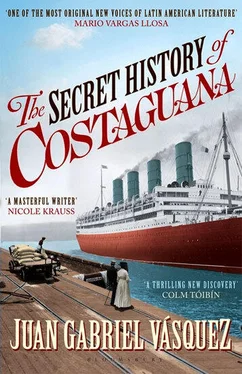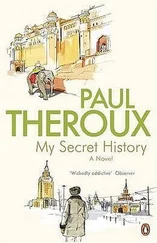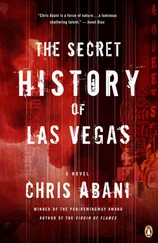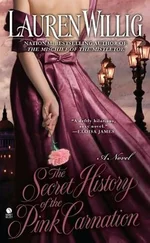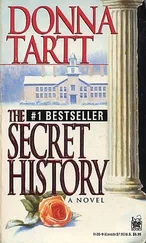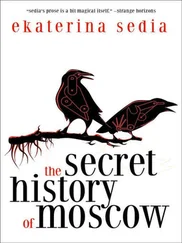From the beginning we realized this war was different. In Panama the memory of the war of ’85 was still vivid, and Panamanians were determined to take their destiny into their own hands this time. So Panama, the Isthmus detached from Colombian reality, the Caribbean Switzerland, joined in the hostilities as soon as it could. Several towns of the isthmian interior rose up in arms two days after the first shots; before a week was out, the Indian Victoriano Lorenzo had armed a force of three hundred men and started his own guerrilla war in the mountains of Cocle. When the news reached Colón, I was having lunch in the same mirrored restaurant from which I’d seen my father emerge a quarter of a century earlier. I was with Charlotte and Eloísa, who was gradually turning into an adolescent of dark and perturbing beauty, and the three of us heard a Jamaican waiter say, “Well, what difference is one more war going to make? The world’s coming to an end anyway.”
It was a commonly held conviction among Panamanians that on December 31 the Final Judgment would begin, that the world wasn’t designed to see the twentieth century. (Every comet, every shooting star seen from Colón, seemed to confirm these prophecies.) And for several months the prophecies gained strength: the last days of the century witnessed battles bloodier than any seen since independence. The coordinates of the country were flooded with blood, and that blood was all Liberal: in every military clash, the revolution was destroyed by the numerical superiority of the government armies. In Bucaramanga, General Rafael Uribe Uribe, at the head of a mixed army of fed-up peasants and rebellious university students, was received with shots fired from the tower of the church of San Laureano. “Long live the Immaculate Conception!” shouted the snipers after each young Liberal death. In Pasto, Father Ezequiel Moreno fired up the Conservative soldiers: “Be like the Maccabees! Defend the rights of Jesus Christ! Kill the Masonic beasts without mercy!” Scenes were also staged on the Muddy Magdalene: in front of the port of Gamarra, Liberal ships were sunk by government cannons, and four hundred and ninety-nine revolutionary soldiers burned to death amid the flaming wood of the hulls, and those who didn’t burn to death drowned in the river, and those who made it to the shore before they drowned were shot without any sort of trial and their bodies left to rot beside the morning’s catfish. And gathered in the telegraph office, the people of Colón awaited the definitive telegram: PROPHECY TRUE STOP COMETS AND ECLIPSES WERE RIGHT STOP ENTIRE WORLD NEARS END. In the Republic of Colombia, the new century was greeted without any celebrations whatsoever. But the telegram never arrived.
Others arrived, however. (As you’ll soon realize, my dear readers, a good part of the war of ’99 was waged in Morse code.) DISASTER FOR REVOLUTIONARIES IN TUNJA. REVOLUTIONARY DISASTER IN CÚCUTA. REVOLUTIONARY DISASTER IN TUMACO. . In the midst of this disastrous telegraphic landscape, no one believed the news of the Liberal victory in Peralonso. No one believed that a Liberal army of three thousand poorly armed men — one thousand Remington rifles, five hundred machetes, and an artillery corps that had made its own cannons out of aqueduct pipes — could have stood up on an equal footing to twelve thousand government soldiers who had allowed themselves the luxury of wearing brand-new uniforms intended for the day the revolution was defeated. GOVERNMENT ROUT IN PERALONSO STOP URIBE DURÁN HERRERA MARCH TRIUMPHANT TOWARD PAMPLONA said the telegram, and nobody believed it could be true. General Benjamín Herrera took a bullet in the thigh and won the battle from a stretcher; he was four years my senior but could already call himself a war hero. That was at Christmas; and on January 1, Colón awoke to find the world still in its place. The French Curse had expired. And I, Eloísa dear, felt that my apolitical house was an invincible fortress.
I felt it with total conviction. The simple force of my will, I thought, had managed to keep the Angel of History far away and marginalized. The war, in this country of windbags, was something that happened in telegrams, in letters exchanged by generals, in the capitulations that were being signed from one end of the Republic to the other. After Peralonso, the revolutionary General Vargas Santos was proclaimed “Provisional President of the Republic.” Mere words (and excessively optimistic ones). From the Panamanian city of David, the revolutionary General Belisario Porras protested before the Conservative government for the “acts of banditry” committed by government soldiers. Mere words. The Liberal command complained of the “flagellations” and “tortures” inflicted on prisoners captured “in their houses” and without “weapons in their hands.”
Mere words, mere words, mere words.
I concede, however, that the words made their sounds from closer and closer. (Words pursue, they can wound, they’re dangerous; words, in spite of being the empty kind of words that Colombians tend to pronounce, can sometimes explode in our mouths, and we mustn’t underestimate them.) The war had now landed in Panama, and in Colón the sound of nearby gunshots reached us and also news of them, the agitation of the prisons crammed with political prisoners and rumors of mistreatment, the smell of the dead that began to be left scattered over the Isthmus, from Chiriquí to Aguadulce. But in my Schizophrenic City, the neighborhood of Christophe Colomb remained firmly installed in a parallel world. Christophe Colomb was a ghost town, and was, to be specific, a French ghost town: What good could a place like that be to a Colombian civil war? As long as we didn’t leave it — I remember having thought — my two women and I would be safe. . But maybe (as I’ve implied elsewhere using other words but finding the exact formula is the writer’s task) my enthusiasm was premature. For at the same time, in the distance, the ill-fated department of Santander, cradle of the war, was flooded with blood, and that battle mysteriously set in motion the hypocritical and backstabbing mechanisms of politics. In other words, a conspiracy was set in motion by which the Gorgon and the Angel of History prepared to invade, in collaboration and without any consideration whatsoever, the paradise of the Altamirano-Madinier household.
It happened in a place called Palonegro. Barely recovered from the bullet wound to his thigh, General Herrera had advanced northward as part of the revolutionary vanguard. In Bucaramanga he took the opportunity to toss out a new crop of words: “Injustice is an everlasting seed of rebellion,” and things like that. But there was no rhetoric worthy of May 11, when eight thousand revolutionaries found themselves up against twenty thousand government troops, and what followed. . How to explain what followed? No, the numbers are of no use to me (those old standbys so beloved of journalists like my father), and statistics, though they travel so well by telegraph, are of no use either. I can say that the combat lasted fourteen hours; I can talk of the seven thousand dead. But numbers don’t decompose, nor are statistics a breeding ground for pestilence. For fourteen days the air of Palonegro filled with the fetid stench of rotting eyes, and the vultures had time to peck open the cloth of the uniforms, and the field became covered in pale naked corpses, with broken bellies and spilled entrails staining the green of the meadow. For fourteen days the smell of death penetrated the nostrils of men too young to recognize it or to know why their mucous membranes were stinging or why it wouldn’t go away even when they rubbed gunpowder into their mustaches. Wounded revolutionaries fled down the Torcoroma trail and collapsed like milestones along the escape route, so one could have kept track of their fate simply by observing the flight paths of the vultures.
Читать дальше
